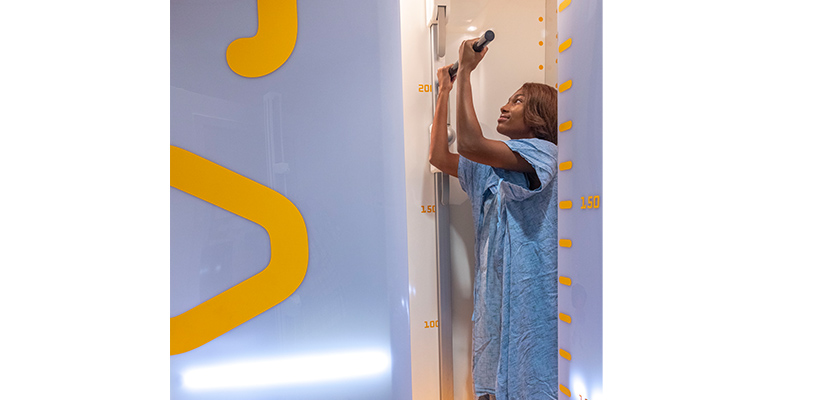O-arm imaging technology
The O-arm® Surgical Imaging System creates 3-D surgical images useful in spine, orthopedic, and trauma-related surgeries. It provides real-time images during surgery without moving the child from the operating room.
By integrating O-arm surgical imaging technology with StealthStation® surgical navigation system, surgeons are able to precisely place hardware and check placement before leaving the operating room.
StealthStation surgical navigation
Surgical navigation systems allow surgeons to quickly and effectively make decisions in the operating room. Surgeons are able to confirm the placement of hardware in surgery and perform safer, more precise procedures.
These technologies make for more effective surgeries, smaller incisions and quicker recovery times for your child.
EOS imaging system
EOS® captures head-to-toe images in a standing, weight-bearing position. Two low-dose digital images are obtained from each scan, allowing for 3-D bone modeling. A full body scan takes less than a minute and helps with surgical planning and monitoring. EOS emits about 10 percent of the radiation of a traditional CT scan.

The Flash™ Navigation System 7D technology
The Flash™ Navigation System 7D technology uses machine-vision cameras and advanced algorithms for navigation during surgery — similar to the technology found in self-driving cars. During surgery, special cameras analyze the surface of the spine using only visible light. Using a preoperative CT scan as a reference, the navigation system then recognizes tracked instruments in relation to the spine. The advanced cameras and algorithms recreate a 3D image for real-time surgical navigation in seconds.
These special cameras replace the standard imaging technique of fluoroscopy, which meant constant exposure to radiation for the patient and the staff during the surgery. In addition to reduced radiation, the lack of fluoroscopy reduces costs associated with personnel needed for fluoroscopy and offers a much quicker imaging process than intraoperative CT.
MAGEC (Magnetic Expansion Control)
MAGEC (Magnetic Expansion Control) is a unique alternative to traditional growing rods, allowing surgeons to straighten and correct the spine gradually and noninvasively. Candidates for the MAGEC device undergo an initial surgery to implant an adjustable magnetized growing rod. Once the rod is implanted, it can be lengthened externally with a hand-held magnetized device, which eventually straightens the spine, eliminating the need for additional surgeries during the same time span. Dr. Sawyer is one of the only surgeons in the country offering this treatment option.



